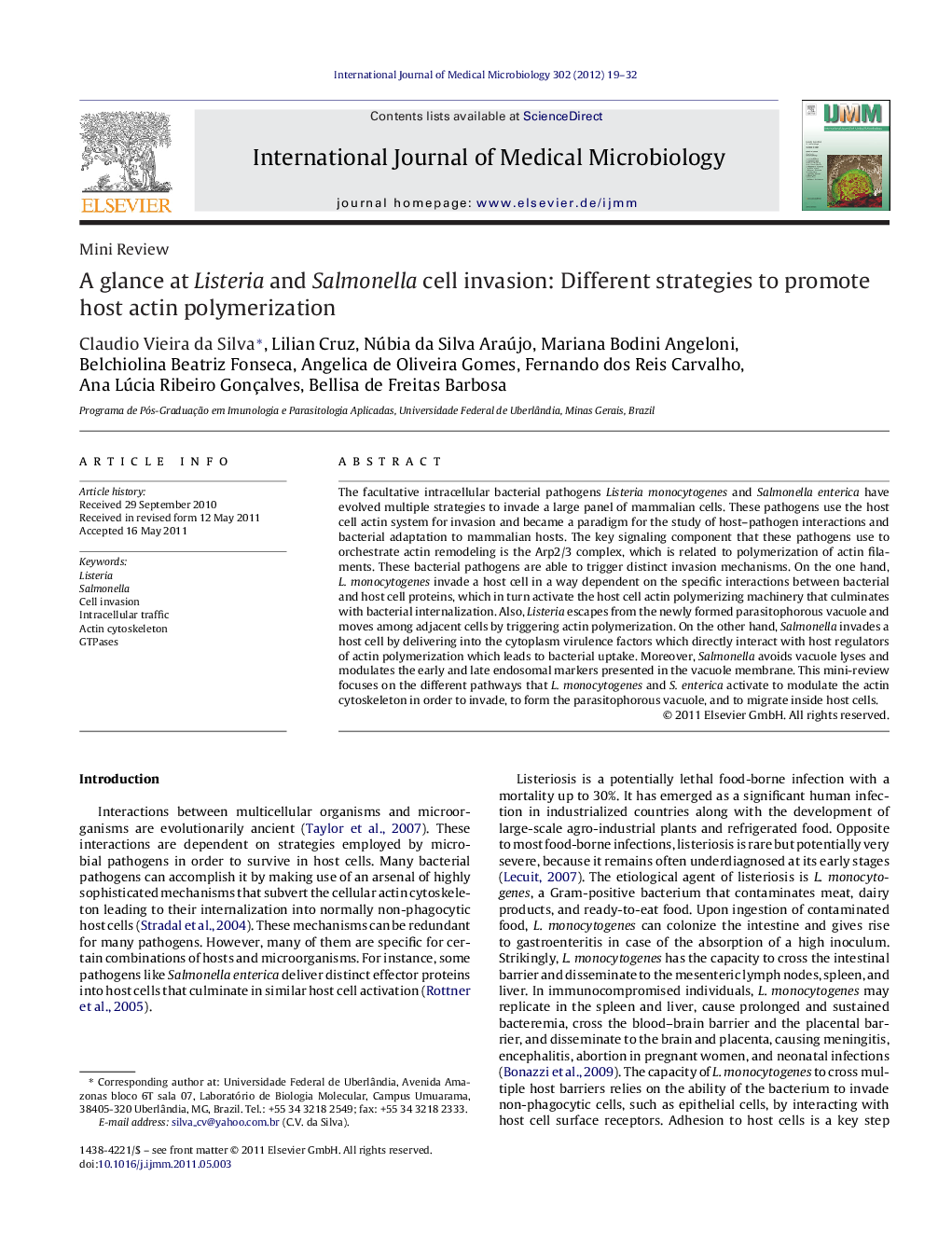| Article ID | Journal | Published Year | Pages | File Type |
|---|---|---|---|---|
| 2054128 | International Journal of Medical Microbiology | 2012 | 14 Pages |
The facultative intracellular bacterial pathogens Listeria monocytogenes and Salmonella enterica have evolved multiple strategies to invade a large panel of mammalian cells. These pathogens use the host cell actin system for invasion and became a paradigm for the study of host–pathogen interactions and bacterial adaptation to mammalian hosts. The key signaling component that these pathogens use to orchestrate actin remodeling is the Arp2/3 complex, which is related to polymerization of actin filaments. These bacterial pathogens are able to trigger distinct invasion mechanisms. On the one hand, L. monocytogenes invade a host cell in a way dependent on the specific interactions between bacterial and host cell proteins, which in turn activate the host cell actin polymerizing machinery that culminates with bacterial internalization. Also, Listeria escapes from the newly formed parasitophorous vacuole and moves among adjacent cells by triggering actin polymerization. On the other hand, Salmonella invades a host cell by delivering into the cytoplasm virulence factors which directly interact with host regulators of actin polymerization which leads to bacterial uptake. Moreover, Salmonella avoids vacuole lyses and modulates the early and late endosomal markers presented in the vacuole membrane. This mini-review focuses on the different pathways that L. monocytogenes and S. enterica activate to modulate the actin cytoskeleton in order to invade, to form the parasitophorous vacuole, and to migrate inside host cells.
